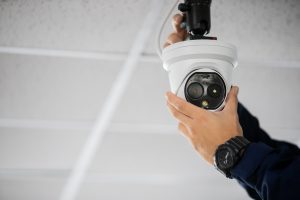Closed-circuit television (CCTV) systems have become an integral part of our daily lives, playing a pivotal role in ensuring the safety and security of various premises, from homes and businesses to public spaces. While installing a CCTV system is the first step towards enhanced security, the effectiveness of these systems is largely dependent on regular maintenance and upkeep.
Proper maintenance not only prolongs the lifespan of your surveillance system but also guarantees that it functions optimally when you need it most. This article aims to provide you with a detailed guide on maintaining your CCTV system effectively.
The Importance of Routine Checks
Consistent system checks are crucial for any CCTV system. Regular audits can identify potential issues before they turn into significant problems that might compromise the security of your premises. Much like a car requires an MOT test, your CCTV system needs frequent inspections to ensure it is in peak condition.
The frequency of these checks may vary depending on various factors like your location, the type of cameras you have, and the overall complexity of your CCTV setup. However, a general rule of thumb would be to perform a comprehensive system audit at least once a quarter. More frequent checks, such as monthly, can be performed for high-security areas.
Hardware Maintenance
Camera Lens Cleaning
Your camera lens is the eye through which your CCTV system observes the world. A dirty or foggy lens can drastically reduce the quality of the images or footage, making it difficult to identify faces or objects clearly.
It’s essential to keep the lens clean for optimal performance.
Using a soft brush or a microfibre cloth, gently remove dust and debris from the lens.
For more stubborn marks, lens cleaning solutions can be used. It’s advisable to perform this cleaning exercise at least once a month to ensure that your system captures high-quality images consistently.
Wiring and Connectivity
Cables are like the nervous system of your CCTV setup; they transmit data and power to keep your cameras operational.
Over time, cables can experience wear and tear, or they might get damaged due to environmental factors like rain or extreme temperatures. Such issues can lead to camera malfunctions or complete system failures.
Regularly inspect the wiring for any signs of fraying, cuts, or loose connections. If any anomalies are found, it’s best to replace the damaged cables promptly. Ensure all connections are secure to maintain the uninterrupted functioning of your CCTV system.
Power Source and Backup Systems
Power is the lifeblood of your surveillance system. An unstable or failing power source can make your CCTV system unreliable. Make sure that the primary power source is in good condition and that all connections are secure.
An uninterruptible power supply (UPS) serves as a backup in case of power failures. Regularly check the UPS to make sure it kicks in when there’s a power outage.
Also, ensure that the battery life of your backup systems is satisfactory and replace batteries that are nearing the end of their useful life.
Software Maintenance
Software Updates
Running outdated software can leave your CCTV system vulnerable to security breaches. Manufacturers frequently release updates to patch security vulnerabilities and improve performance.
To keep your system secure and efficient, make sure to regularly update your software.
Before doing so, read the patch notes to understand what changes are being made and ensure that the update doesn’t interfere with any custom settings you may have implemented.
Password Management
Robust passwords are the first line of defence in protecting access to your CCTV system. Using weak or default passwords can expose your system to unnecessary risks, such as unauthorized access or hacking attempts.
Change your passwords regularly and use a combination of upper and lower case letters, numbers, and special characters to make them harder to guess or crack.
Multi-factor authentication, where available, can add an extra layer of security.
Data Storage and Management
Storage space is often an overlooked aspect of CCTV maintenance. Running out of storage can result in older data being overwritten, which might be crucial in some cases.
Ensure you regularly check the available storage space on your system and clear out unneeded data.
For critical applications, consider using cloud-based storage solutions or external hard drives as backup options. Ensure these backup systems are also secure to prevent any data breaches or loss of sensitive information.
Conclusion
Maintaining your CCTV system is not a one-off activity but an ongoing process. Regular upkeep ensures that your cameras and software are functioning at their peak capacity, thereby guaranteeing optimal security.
Consider this article as your go-to guide for all matters related to CCTV maintenance. Ignoring these vital steps might compromise your security when you need it most.
So, go ahead and schedule your next routine check-up for your CCTV system today. Get in touch with us today for free quotes on our CCTV systems.





